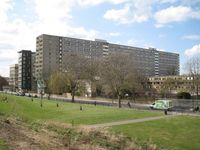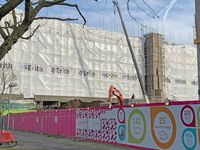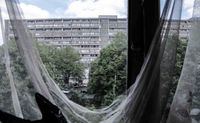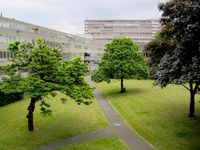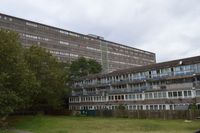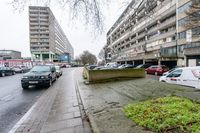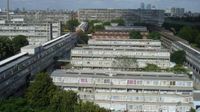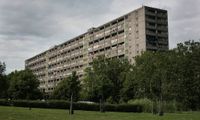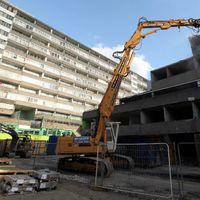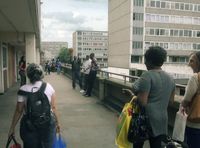Aylesbury estate, Southwark
The original estate was completed in 1977, providing 2,758 homes. In 1999 the Aylesbury estate received £56m as part of Labour’s New Deal for Communities (NDC) programme. The NDC finished in 2010 and the Aylesbury Area Action Plan (AAAP) was formally adopted. The AAAP outlined the estate’s regeneration, involving phased demolition of all existing buildings and new-build re-development, increasing density to 3,575 homes. The first new homes were completed in 2012 and the Council appointed Notting Hill Genesis Housing Association as its development partner. The further works will happen in four phases, leading to an incremental decant and demolition of the estate, with the overall regeneration estimated to be completed in 2036.
Notting Hill Genesis' planning application describes the replacement 'social housing' as a mix of 'target and affordable rent' and acknowledges that in any event there will be an overall net loss of 931 social rented homes.
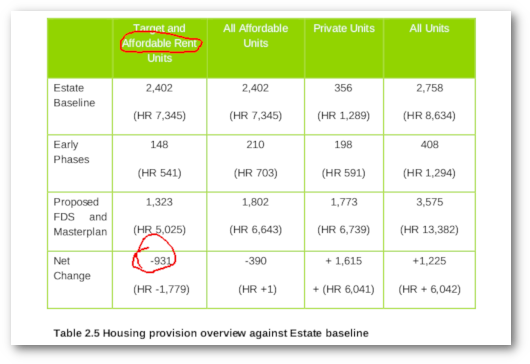
In February 2015 a group of protesters occupied the first development site in protest at the loss of council homes and residents disenfranchised by the scheme.

In September 2016, after a protracted public inquiry the Secretary of State rejected Southwark Council's application to remove remaining leaseholders with a compulsory purchase order on the grounds that rehousing offers to leaseholders wouldn't enable them to stay in the area. This subsequently led to a policy change which improved the rehousing offer.
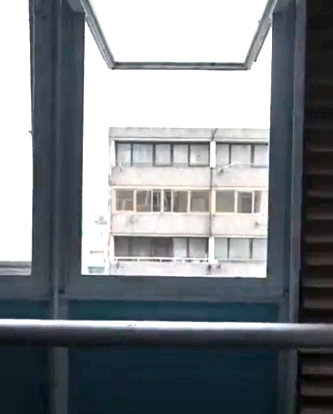
The Aylesbury
In this short documentary film - The Aylesbury - directed by James Webber, Loretta Lees and estate residents are interviewed about the estate. The film begins with the building of the Aylesbury estate as part of the post-war slum clearances in South London, highlighting its use of the pre-fab method implemented by Laing Construction; it then compares the joy its new residents experienced on moving in with the more negative portrayals from the media, including its denigration by architect-planner Oscar Newman. The film continues by discussing the managed decline of the estate and the demolition and displacement its residents are currently experiencing. It underlines the story of a community that will soon disappear.
The Director, James Webber, has an MA in Screen Documentary from Goldsmiths, University of London, he currently works for the London-based documentary film distributor Dogwoof.
Contact: jamesgeorgewebber1@gmail.com
WatchStatement by Beverley Robison
Former Aylesbury resident
"The Aylesbury estate in South London was one of the best estates to live on before deliberate managed decline. It is one of the largest council estates in England and Europe. With its beautiful brutalist architectural construction, the properties are homely, spacious, bright and airy with lots of outside space, greenery and communal space for bringing a community together. These types of homes would be excellent in a pandemic lockdown situation - for good health and well-being. Council homes and estates are great to establish a community and long term security. Unfortunately my community was taken away from me when I was forced to live alone for almost 5 years in a high rise council block of 171 empty flats, as I fought for my home and community. I was the only one living there in my two bedroom flat because the Council wanted to take my 31 year home and savings in the name of regeneration. Where is the justice in that? No homes, no community! Bring back council homes with community spirit. Don’t isolate and segregate in the name of profit. Having a secure home is the core of belonging and living. Community, community! Fight to save your home and community!"
Research Interviews
Key themes discussed in the interviews:
- Residents have experienced long term interference and disruption (including to services) due to building works from the regeneration.
- Leaseholder often expressed concern that they will not be adequately compensated for their homes, meaning they will be unable to afford homes on the redeveloped site or in the area after regeneration.
- The residents sense that South London as an area is experiencing gentrification pressure and that the area is likely to change to accommodate a different demographic of residents.
- It was often expressed that financial investment is driving the changes and this creates resentment.
- There is a fear for the future and residents shared an opinion that the Council is intentionally displacing residents.
- The symbolic loss of the adjacent Heygate Estate and the displacement of its residents is referenced often and likely adds to these fears.
Here is what some people said...
"Well it was just a protracted series of micro exploitations and people being bought off or hushed up or kept in the dark about what was going on in the drawn-out redevelopment scheme."
"You know, when I moved, the time I moved, the council housing is for life, until you die you live there, that is the things that I put in my mind, and that was this place where I am going to die. And then suddenly, when the whole of this gentrification, it started, it has been taken away from, the whole of the network and that is it. You have got to your home, to die in, and it has been taken away from you."
"We don't want the new ones they are too expensive. A studio flat there is £428,000. And the Council is offering me [£]250 [thousand] for my three-bedroom… And a three bedroom [in the new-builds] is [£]850,000."
"They [residents moved off the estate] have been scattered around. And then, and we have been given - kind of, that they all moved, or most of them, within the Southwark Borough. But we don't know where they have moved to. But the main thing, most of them have moved to housing associations. Which is, we know is future homelessness is waiting for them, and some of them have started struggling, because everybody knows that they cannot afford to pay the rent, service charge, now housing association have already made the private landlord, so who is going to, keep the rents and everything - as a private, they do as they like."
"She [the housing officer] has total disregard because they feel that ‘Oh, people here are ethnic minorities or whatever’, so they [the Council] feel they have the right to just treat people anyhow what - they feel that we don't read. They don’t think we’re going to read any documents or we have no knowledge of anything. And so they try and just use that against us and they think that we are illiterate."
Audio extracts
Displacement Maps
(submitted to the CPO Public Inquiry)

The displacement of tenants from the Aylesbury Estate
Source: Aylesbury Estate 1st Public Inquiry (2015), London. Data from Notting Hill Trust. Witness Statement Professor Loretta Lees.

The displacement of leaseholders from the Aylesbury Estate in and beyond Greater London
Source: Aylesbury Estate 1st Public Inquiry (2015), London. Data from Notting Hill Trust. Witness Statement Professor Loretta Lees.
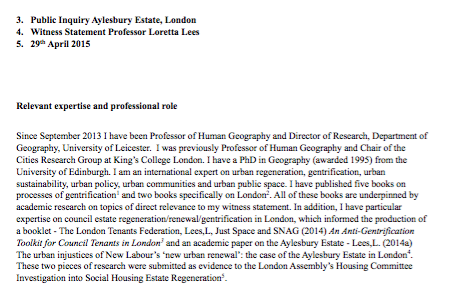
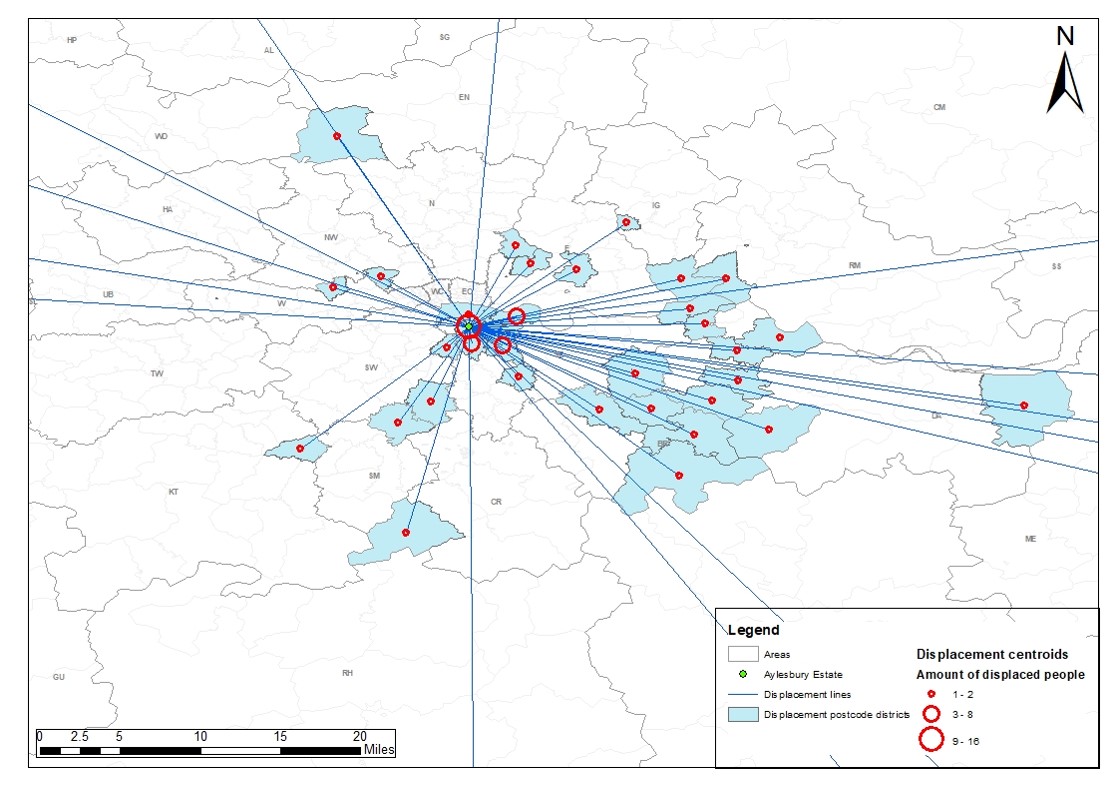
The displacement of leaseholders from the Aylesbury Estate within Greater London
Source: Aylesbury Estate 2nd Public Inquiry (2018), London. Data sourced from FOI data from Southwark Council. Witness Statement Professor Loretta Lees.
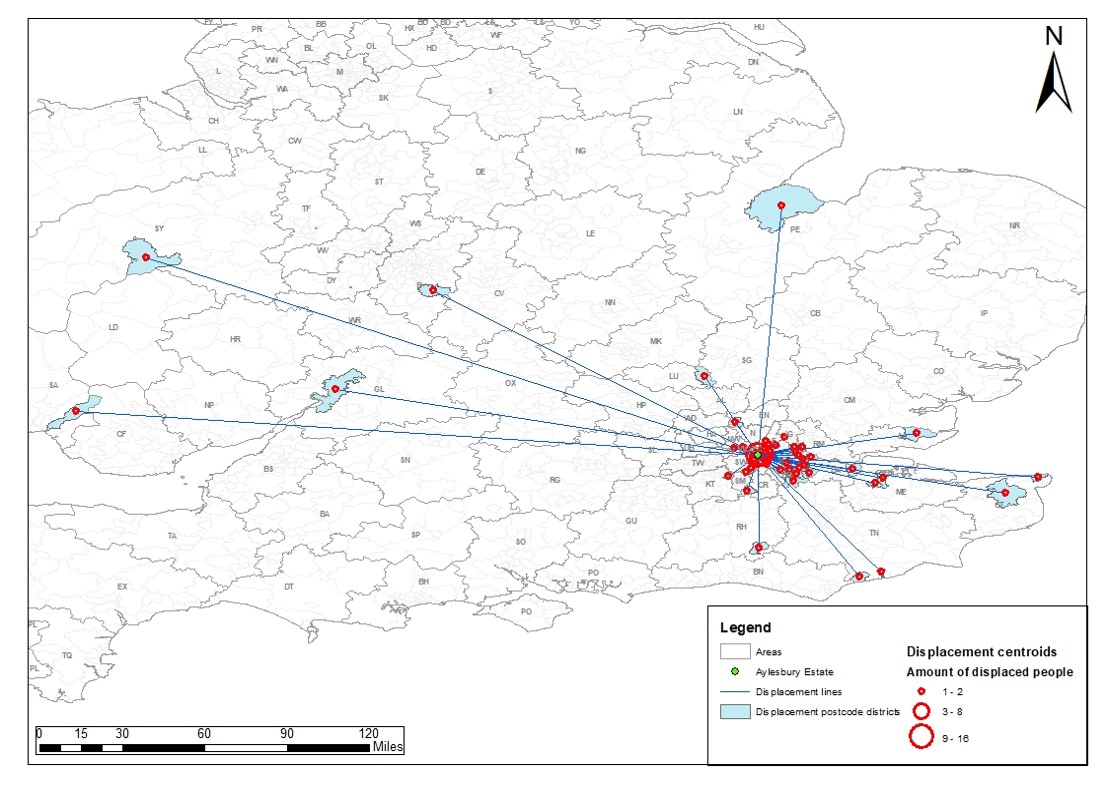
The displacement of leaseholders from the Aylesbury Estate in and beyond Greater London
Source: Aylesbury Estate 2nd Public Inquiry (2018), London. Data sourced from FOI data from Southwark Council. Witness Statement Professor Loretta Lees.

Prof Loretta Lees Witness statement 2018
Public Inquiry, Aylesbury Estate, London. January 2018.
